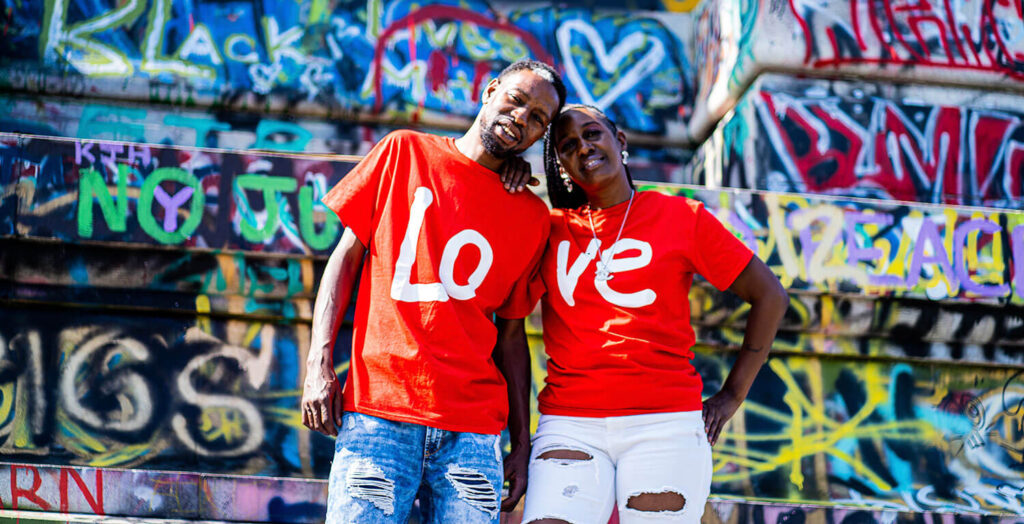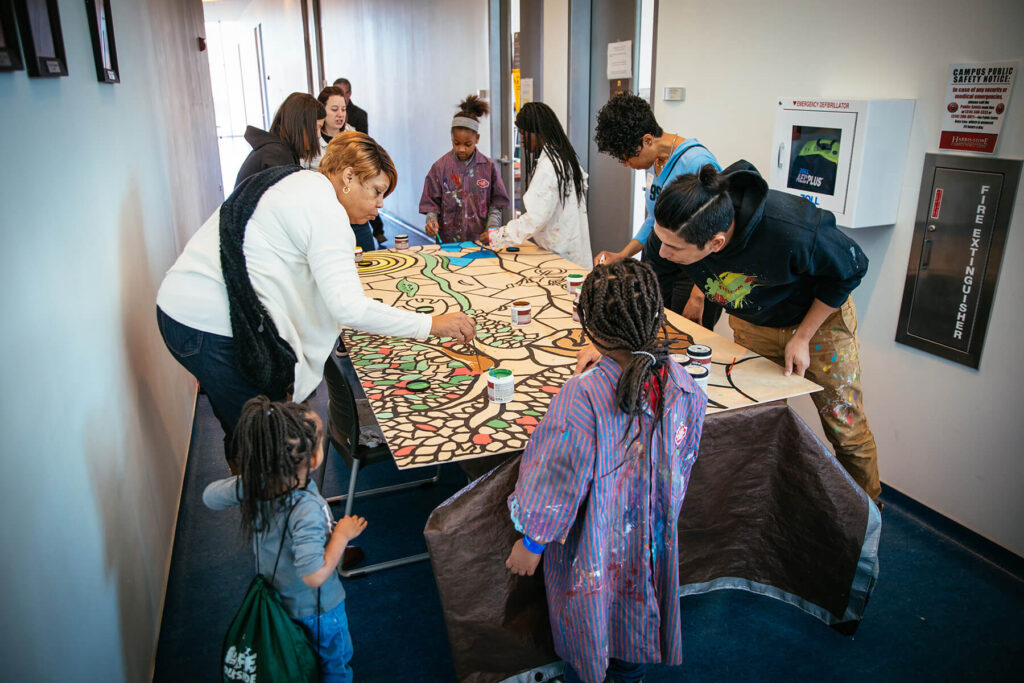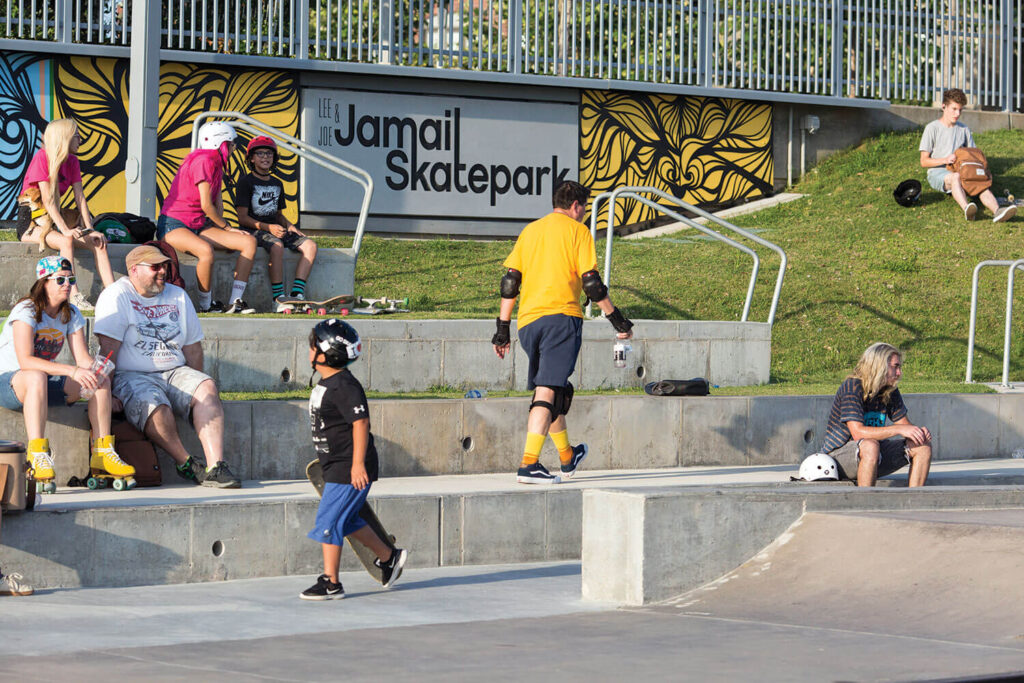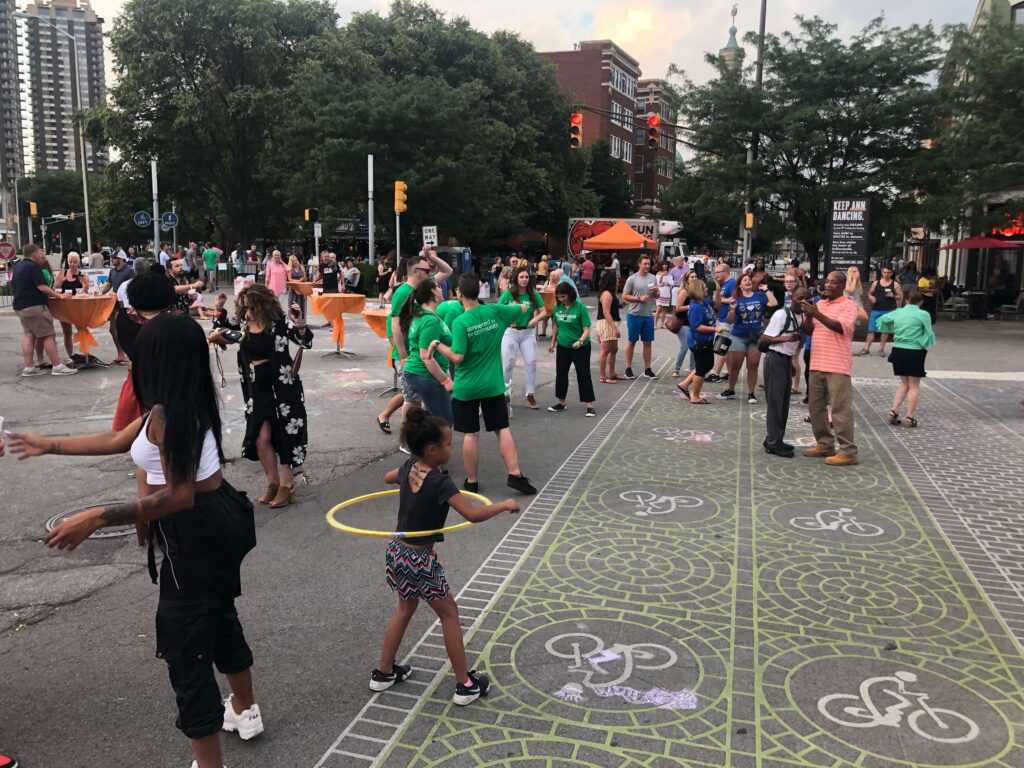Would you like to showcase your own work to embed equity in your infrastructure reuse project?
Preserving, Connecting, and Building Black and Brown Space and Place

BridgePark is creating programming to honor Black culture in the city. Credit: Keshia Eugene, BridgePark.
“Because of the history of exclusion of Black and Brown communities from much of the Region’s growth initiatives, we’re about Black and Brown community place-making and place-keeping to ensure that the benefits and the power—culturally, economically and civically—that are derived from BP flow equitably to Black and Brown neighborhoods.”
That short, purposeful statement carries a lot of weight with Richmond BridgePark Foundation—it is their “theory of change,” a look to the outcomes they want to achieve as they transform Manchester Bridge in Virginia’s capital into a linear park.
A good theory of change (ToC) is concise, sets a vision for future equitable outcomes, and aligns with your mission. BridgePark had a “big picture” of what they wanted to do well before their steering committee started working on their ToC. They knew they wanted to address historic economic inequities in the city through economic development and education. Black and Brown communities’ cultural assets and community landmarks have often been overlooked in Richmond, and affected by disinvestment and damaging urban policies.
The ToC process helped the organization drill down to the core importance of “Black place-making and place-keeping.” They gained a clearer understanding of how to prioritize equitable development—and then were ready to develop a work plan.
Project Org
Richmond BridgePark FoundationRelated Toolkit Section
Center EquityRelated Tool
CRAFT A THEORY OF CHANGE“Because of the history of exclusion of Black and Brown communities from much of the Region’s growth initiatives, we’re about Black and Brown community place-making and place-keeping to ensure that the benefits and the power—culturally, economically and civically—that are derived from BP flow equitably to Black and Brown neighborhoods.”
That short, purposeful statement carries a lot of weight with Richmond BridgePark Foundation—it is their “theory of change,” a look to the outcomes they want to achieve as they transform Manchester Bridge in Virginia’s capital into a linear park.
A good theory of change (ToC) is concise, sets a vision for future equitable outcomes, and aligns with your mission. BridgePark had a “big picture” of what they wanted to do well before their steering committee started working on their ToC. They knew they wanted to address historic economic inequities in the city through economic development and education. Black and Brown communities’ cultural assets and community landmarks have often been overlooked in Richmond, and affected by disinvestment and damaging urban policies.
The ToC process helped the organization drill down to the core importance of “Black place-making and place-keeping.” They gained a clearer understanding of how to prioritize equitable development—and then were ready to develop a work plan.
Share this Case Study


